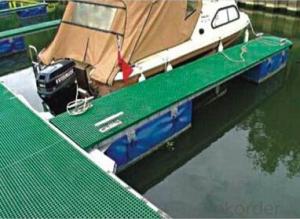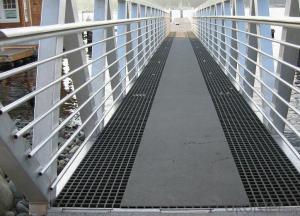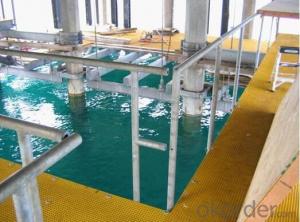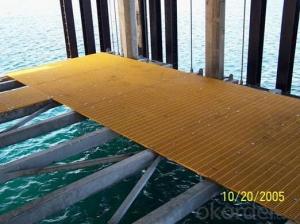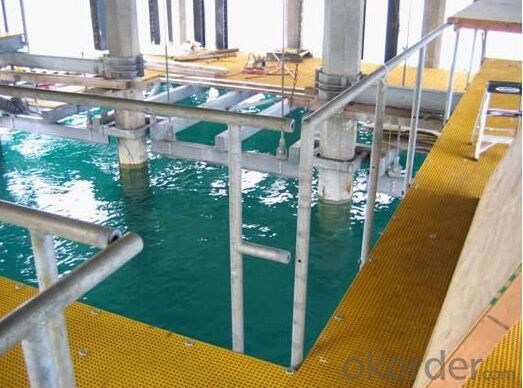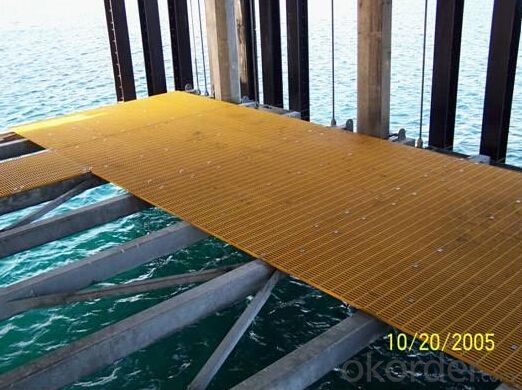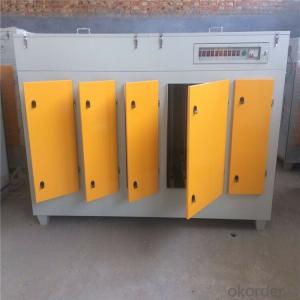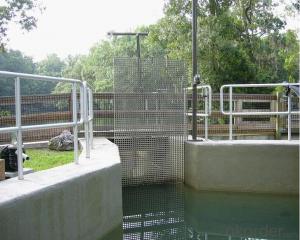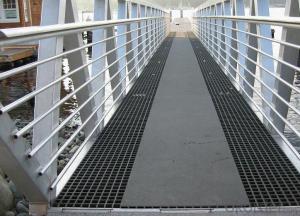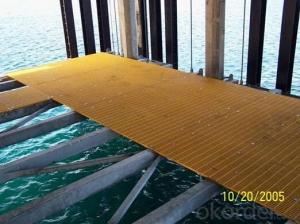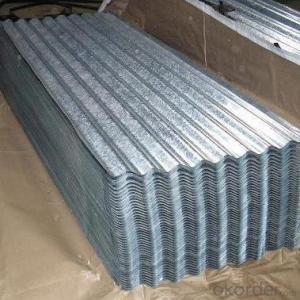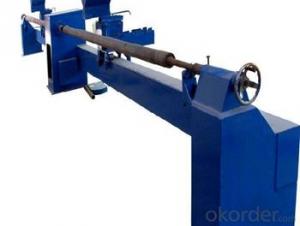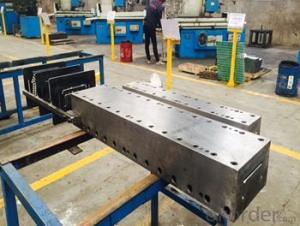FRP Pultrusion Profiles - Non-Skid FRP Gratings with Impact Resistance 2024
- Loading Port:
- Shanghai
- Payment Terms:
- TT OR LC
- Min Order Qty:
- 10 pc
- Supply Capability:
- 8000 pc/month
OKorder Service Pledge
OKorder Financial Service
You Might Also Like
Specification:
FRP molded grating made of vertical and horizontal continuous fiberglass fully soaked in unsaturated polyester resin giving perfect bi-directional mechanical properties. Combining unmatched corrosion resistance with strength, long life and safety, molded grating provide the ultimate in reliable performance, even in the most demanding corrosive conditions. Besides, it is easy to cut and install. CNBM offer the widest selection with panel sizes, colors and slip resistant surfaces, clients can avail FRP grating your specific requirements.
Product Features:
- Light but high loaded strength
- High anti-corrosion and anti-aging
- Easy installation and maintenance
- Low maintenance
- Non-conductive
- Lowest in life cycle cost
- Corrosion Resstance
- Anti-slippery
- Various sizes and color available
Colour Design:
To satisfy customer's design project, CNBM grating offers a wide selection of grating colors to choose from. The standard colors available for fiberglass grating as following:
- Blue
- Red
- Yellow
- Green
- Light Grey
- Dark Grey
Custom colors of fiberglass grating may be available upon request, you can contact us learn more.
Moded Grating Sizes List:
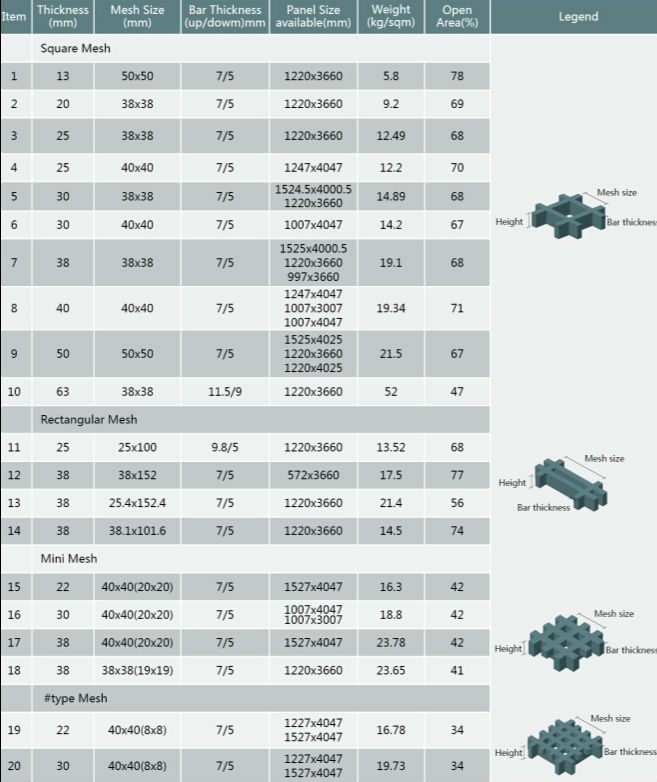
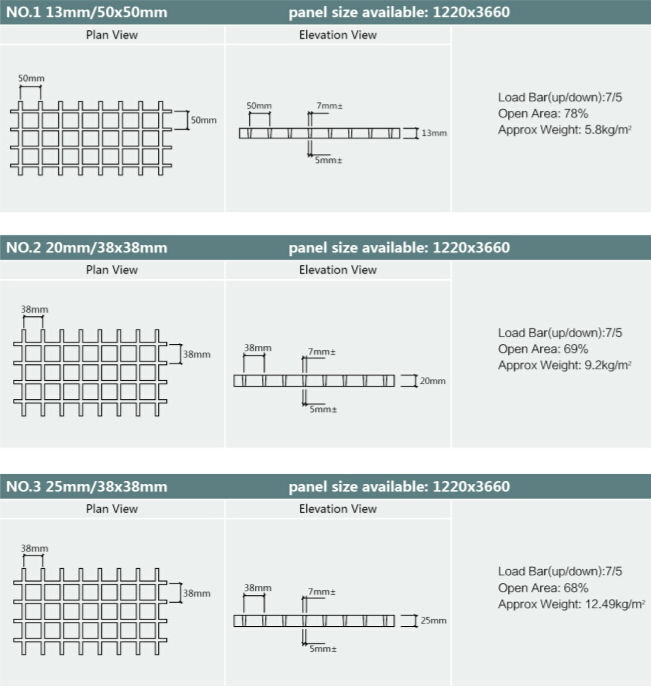

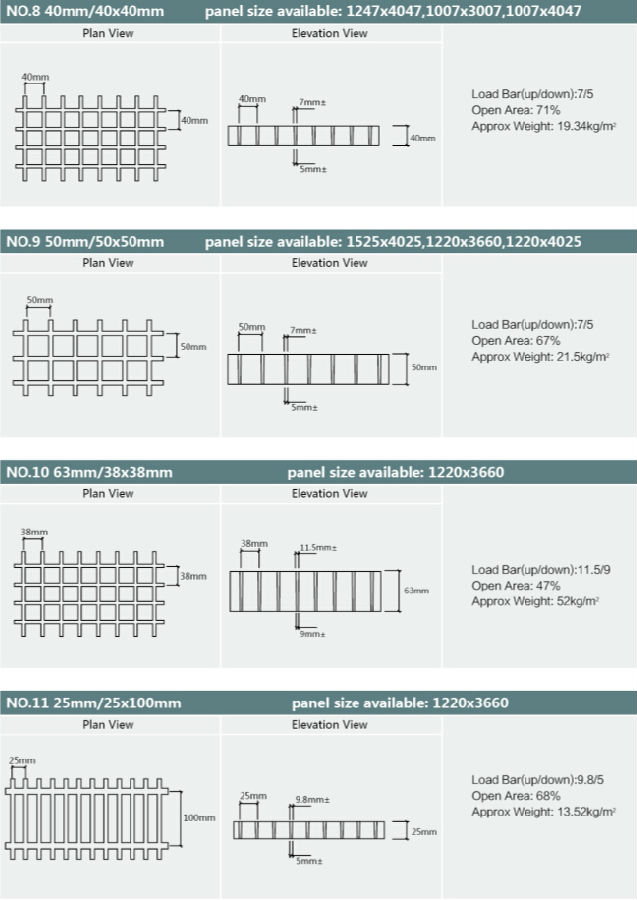
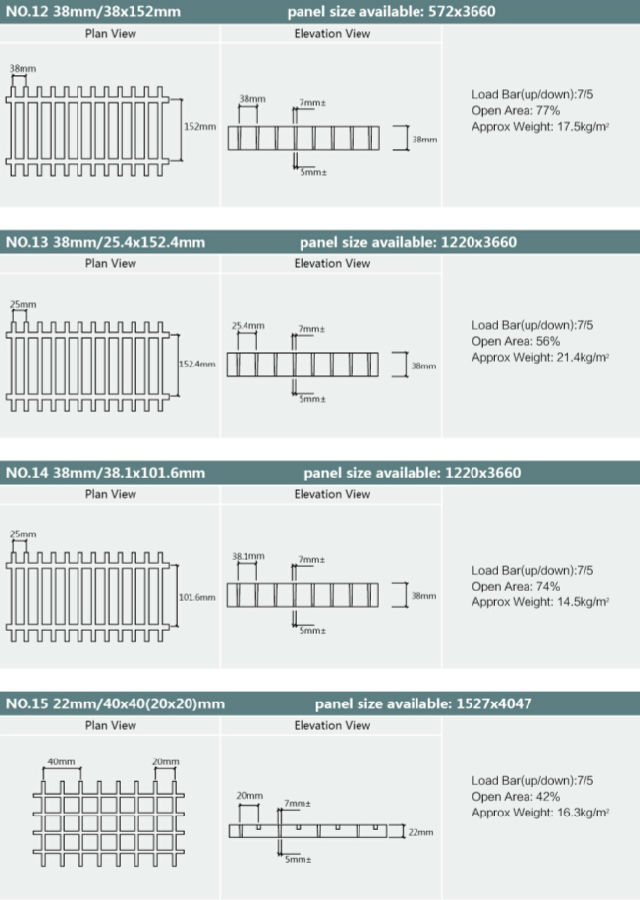

- Q: Are FRP pultrusion profiles resistant to seismic activity?
- Yes, FRP pultrusion profiles are generally resistant to seismic activity. Due to their high strength-to-weight ratio and excellent flexibility, FRP profiles have demonstrated great resilience and durability during seismic events. Additionally, their non-corrosive nature and superior fatigue resistance make them suitable for seismic-prone regions. However, specific design considerations and engineering analysis are necessary to ensure optimal performance in seismic conditions.
- Q: How do FRP pultrusion profiles perform in corrosive gas environments?
- In environments with corrosive gases, FRP pultrusion profiles exhibit outstanding performance. Their exceptional corrosion resistance, a notable characteristic of FRP, makes them highly suitable for applications that involve exposure to corrosive gases. Typically composed of a combination of glass fibers and a resin matrix like polyester or vinyl ester, FRP pultrusion profiles inherently possess corrosion resistance and do not react with most corrosive gases. Consequently, they can endure exposure to a wide range of corrosive gases, including sulfur dioxide, hydrogen sulfide, chlorine, and others. Furthermore, FRP pultrusion profiles excel in durability and long-term performance within corrosive gas environments. Unlike traditional materials such as steel or aluminum, they do not rust, corrode, or degrade over time. This corrosion resistance ensures the structural integrity of FRP profiles, even in harsh environments, thereby reducing maintenance and replacement costs. Moreover, FRP pultrusion profiles can be customized by incorporating specific chemical-resistant resins and additives. This customization allows for tailoring the FRP profiles to precisely meet the requirements of the application, ensuring optimal performance and longevity. In conclusion, FRP pultrusion profiles present an exceptional choice for environments with corrosive gases due to their remarkable corrosion resistance, long-term durability, and customization capabilities. They offer a reliable and cost-effective solution for industries such as chemical processing, oil and gas, wastewater treatment, and others in which exposure to corrosive gases is a concern.
- Q: How do FRP pultrusion profiles perform in earthquake-prone areas?
- FRP (Fiber Reinforced Polymer) pultrusion profiles have several advantages when it comes to performance in earthquake-prone areas. Firstly, FRP pultrusion profiles are known for their high strength-to-weight ratio. This means that they are lightweight compared to traditional construction materials such as steel or concrete, while still offering significant strength. This characteristic plays a crucial role in earthquake-prone areas as it reduces the overall mass of the structure, minimizing the inertial forces that can be generated during seismic events. Therefore, FRP profiles can effectively withstand and absorb the energy released during an earthquake, reducing the risk of structural damage or collapse. Additionally, FRP pultrusion profiles have excellent durability and resistance to corrosion. Unlike steel, they are not susceptible to rust or other forms of degradation caused by moisture or chemicals commonly found in earthquake-prone areas. This resistance to corrosion ensures the long-term performance and reliability of FRP profiles, minimizing the need for costly maintenance and repairs. Moreover, FRP pultrusion profiles exhibit high flexibility and ductility. These characteristics allow them to deform and absorb energy without fracturing or breaking, which is particularly advantageous during seismic events. By dissipating the energy generated by the earthquake, FRP profiles help to protect the integrity of the structure and prevent catastrophic failures. Lastly, FRP pultrusion profiles are non-conductive materials, meaning they do not conduct electricity. This feature is important in earthquake-prone areas where electrical infrastructure can be vulnerable to damage. The non-conductive nature of FRP profiles reduces the risk of electrical faults or fires caused by seismic activity. In conclusion, FRP pultrusion profiles offer several performance advantages in earthquake-prone areas. Their lightweight, high strength, durability, flexibility, and non-conductive properties make them a reliable and effective choice for construction in regions prone to seismic activity.
- Q: Are FRP pultrusion profiles resistant to hail or impact damage?
- FRP pultrusion profiles exhibit exceptional resistance to both hail and impact damage. The incorporation of reinforcing fibers such as carbon or glass, along with a polymer resin matrix, grants these profiles unparalleled strength and durability. When compared to materials like wood, steel, or aluminum, FRP pultrusions offer significantly superior impact resistance. These profiles are specifically engineered to endure even the harshest environmental conditions, including hailstorms. The composite composition of FRP enables it to effectively absorb and distribute the energy generated by impacts, effectively preventing the formation of cracks or fractures. As a result, they are an ideal choice for various applications that necessitate protection against hail or impact damage, such as building facades, bridges, handrails, and utility poles. Moreover, FRP pultrusion profiles possess an impressive strength-to-weight ratio, meaning they can withstand heavy impacts without undermining their structural integrity. Furthermore, they are non-corrosive, making them impervious to rust or degradation caused by hail or impact. To summarize, the composite construction and exceptional strength-to-weight ratio of FRP pultrusion profiles render them highly resistant to hail or impact damage. They offer a reliable and long-lasting solution for applications that demand durability and resilience in the face of harsh environmental conditions.
- Q: How do FRP pultrusion profiles compare to steel or aluminum profiles?
- FRP (Fiber Reinforced Polymer) pultrusion profiles offer several advantages over steel or aluminum profiles. Firstly, FRP profiles are extremely lightweight, making them easier to handle and install. This is particularly beneficial in industries where weight reduction is crucial, such as aerospace or automotive applications. Another significant advantage of FRP pultrusion profiles is their exceptional corrosion resistance. Unlike steel or aluminum, FRP does not rust or corrode when exposed to moisture, chemicals, or harsh environmental conditions. This property makes FRP profiles ideal for applications in marine environments or chemical processing plants, where traditional materials would quickly deteriorate. In terms of strength, FRP pultrusion profiles can match or even surpass steel or aluminum profiles. The unique combination of reinforcing fibers and polymer resin in FRP provides excellent tensile and flexural strength. Additionally, FRP profiles have a high stiffness-to-weight ratio, meaning they can withstand heavy loads while remaining lightweight. Furthermore, FRP pultrusion profiles offer excellent electrical insulation properties. Unlike metal profiles, FRP does not conduct electricity, making it a safe choice for electrical applications where insulation is crucial. While steel or aluminum profiles may have their own advantages in certain applications, FRP pultrusion profiles often provide a more cost-effective solution due to their long lifespan and low maintenance requirements. FRP profiles are not susceptible to rust, corrosion, or degradation, minimizing the need for frequent repairs or replacements. Overall, FRP pultrusion profiles offer a compelling alternative to steel or aluminum profiles, providing lightweight, corrosion-resistant, strong, and electrically insulating solutions for various industries and applications.
- Q: Are FRP Pultruded Shapes poisonous?
- It shouldn't be poisonous. He can use it in a lot of production and life, especially all kinds of pipes, including water pipes
- Q: Are FRP pultrusion profiles resistant to hydrochloric acid?
- Yes, FRP pultrusion profiles are generally resistant to hydrochloric acid due to the corrosion-resistant properties of the fiberglass reinforcement and the resin matrix used in their construction. However, the specific resistance may vary depending on the composition and concentration of the acid, and it is recommended to consult the manufacturer's specifications for detailed information regarding chemical resistance.
- Q: Are FRP pultrusion profiles impact resistant?
- Yes, FRP (Fiber Reinforced Polymer) pultrusion profiles are known for their high impact resistance. The combination of strong reinforcing fibers and a polymer matrix makes them highly durable and able to withstand significant impact forces without breaking or deforming.
- Q: Are FRP pultrusion profiles resistant to fungi and mold?
- Yes, FRP pultrusion profiles are highly resistant to fungi and mold. The combination of the materials used in FRP (Fiber Reinforced Polymer) and the manufacturing process make them inherently resistant to biological growth. This makes FRP pultrusion profiles a durable and low-maintenance solution in environments prone to fungal and mold growth.
- Q: Are FRP pultrusion profiles resistant to impact and vibration?
- Yes, FRP pultrusion profiles are generally resistant to impact and vibration due to their high strength-to-weight ratio and excellent flexural properties. The composite material used in the pultrusion process provides inherent toughness and durability, making FRP profiles suitable for applications where impact and vibration resistance are important considerations.
Send your message to us
FRP Pultrusion Profiles - Non-Skid FRP Gratings with Impact Resistance 2024
- Loading Port:
- Shanghai
- Payment Terms:
- TT OR LC
- Min Order Qty:
- 10 pc
- Supply Capability:
- 8000 pc/month
OKorder Service Pledge
OKorder Financial Service
Similar products
Hot products
Hot Searches
Related keywords
